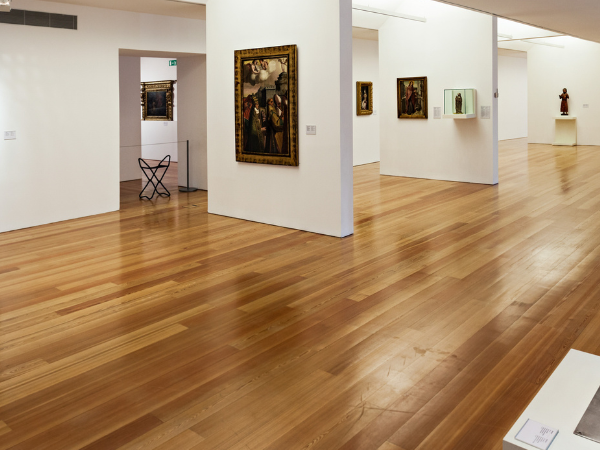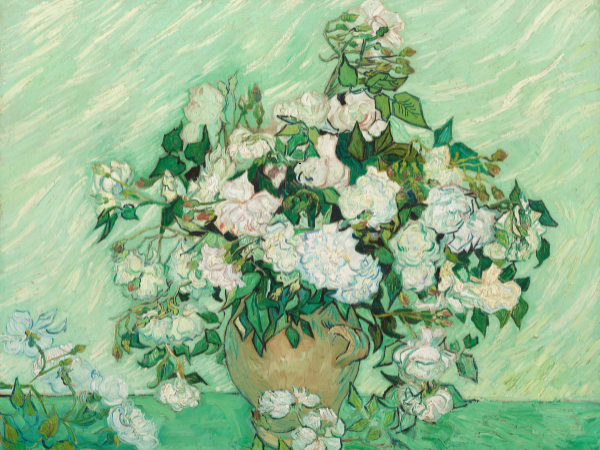Discover the simple steps and training paths that can turn your curiosity into a rewarding experience. By the end, you’ll know exactly how to start making a difference, meet new people, and deepen your connection to the art and history you enjoy.
Museum Roles
Museums offer more than just exhibits. They provide a chance to connect, learn, and contribute. Moving from a visitor to a volunteer means taking a step deeper into the museum world. Understanding the various museum roles helps people find where they fit best.
Visitor Engagement
Visitor engagement is the heart of any museum experience. It involves creating connections between the visitor and the exhibits. Volunteers often play a key role here. They guide visitors, answer questions, and make the visit enjoyable.
Key tasks in visitor engagement include:
- Welcoming visitors with a friendly attitude
- Providing clear information about exhibits and events
- Leading tours and sharing stories about artifacts
- Helping visitors use interactive displays
- Gathering visitor feedback to improve services
Volunteers in visitor engagement receive training in communication and museum knowledge. They learn how to handle diverse visitors, including children and seniors. Museums often provide guides or manuals to help volunteers prepare.
| Skill | Purpose | Training Method |
|---|---|---|
| Active Listening | Understand visitor needs and questions | Role-playing exercises |
| Storytelling | Make exhibits interesting and relatable | Workshops with museum educators |
| Problem Solving | Manage visitor concerns smoothly | Scenario-based training |
Volunteer Opportunities
Museums offer many volunteer roles beyond visitor engagement. Each role supports the museum differently. Volunteers can choose roles that fit their skills and time availability.
Common volunteer opportunities include:
- Collections Care: Help preserve and organize artifacts.
- Event Support: Assist with museum programs and special events.
- Education Assistants: Support school visits and learning activities.
- Marketing Help: Aid in promoting museum events through social media or flyers.
- Research Aid: Assist with gathering historical information.
Each opportunity has specific training to prepare volunteers. Training may include safety procedures, handling artifacts, or learning museum policies.
Here is an overview of volunteer roles and training:
| Role | Main Duties | Training Focus |
|---|---|---|
| Collections Care | Cleaning, cataloging, storing items | Artifact handling, preservation basics |
| Event Support | Setting up, guiding guests, managing crowds | Event safety, customer service |
| Education Assistants | Helping with tours and workshops | Child engagement, educational methods |
| Marketing Help | Creating and distributing promotional materials | Social media basics, graphic design |
| Research Aid | Collecting and organizing historical data | Research methods, data entry |
Volunteer Benefits
Volunteering in museums transforms a simple visit into a meaningful experience. Beyond enjoying exhibits, volunteers gain valuable benefits. These benefits include personal growth, new skills, and a chance to give back to the community.
Skill Development
Volunteering in museums offers a great way to learn new skills and improve existing ones. Training programs help volunteers build confidence and knowledge in many areas. These skills can be useful for school, work, or everyday life.
- Communication: Volunteers practice speaking clearly to visitors and staff.
- Customer Service: Handling questions and helping guests creates strong people skills.
- Research: Learning about exhibits improves information-gathering abilities.
- Teamwork: Working with others teaches cooperation and problem-solving.
- Organizational Skills: Managing tasks and schedules becomes easier.
Here is a simple table showing some common skills gained through museum volunteering:
| Skill | Benefit | Example |
|---|---|---|
| Public Speaking | Boosts confidence | Guiding tours |
| Research | Improves knowledge | Preparing exhibit info |
| Teamwork | Builds cooperation | Collaborating on events |
Volunteering also helps develop problem-solving skills. Volunteers learn to handle unexpected questions or situations calmly. Training sessions prepare them for these challenges. This preparation makes the experience less stressful and more rewarding.
Community Impact
Volunteers help museums serve their communities better. Their work supports education, culture, and local history. Museums rely on volunteers to connect with visitors and share important stories.
Volunteering creates a strong sense of belonging. It brings people together with shared interests. Volunteers become part of a team that values learning and service.
- Supporting Education: Volunteers help teach children and adults.
- Preserving History: They assist in caring for artifacts.
- Promoting Culture: Volunteers share diverse stories and traditions.
- Building Connections: They create friendships and networks.
Here is a list of ways volunteers make a difference in communities:
- Leading educational programs for schools
- Helping organize local events and exhibitions
- Welcoming visitors and offering friendly support
- Assisting in preservation projects
- Sharing museum stories through tours and talks
By volunteering, individuals contribute to keeping museums alive and vibrant. Their efforts ensure museums remain places of learning and enjoyment for everyone. This sense of impact often inspires volunteers to stay involved long-term.
Training Programs
Training programs are essential for transforming visitors into confident museum volunteers. These programs offer structured learning paths that help volunteers understand their roles and responsibilities.
Orientation Sessions
Orientation sessions introduce new volunteers to the museum’s mission, rules, and culture. These sessions usually happen in person and last a few hours. Volunteers learn about the museum’s history, key exhibits, and visitor expectations. Staff explain safety guidelines and volunteer duties clearly. Orientation helps volunteers feel welcome and ready to contribute.
Common topics covered in orientation sessions include:
- Museum background and mission
- Volunteer roles and responsibilities
- Visitor interaction tips
- Safety and emergency procedures
- Code of conduct and dress code
Many museums use a simple schedule to guide orientation:
| Time | Topic | Method |
|---|---|---|
| 0-30 min | Welcome and Museum Overview | Presentation |
| 30-60 min | Volunteer Roles and Guidelines | Discussion |
| 60-90 min | Safety and Emergency Training | Video and QA |
Orientation sessions set clear expectations and reduce volunteer anxiety. Volunteers leave feeling informed and eager to start.
Hands-on Workshops
Hands-on workshops provide practical experience. They let volunteers practice tasks they will perform at the museum. These workshops often take place in small groups. Volunteers learn by doing, which helps them remember skills better.
Workshop topics may include:
- Guiding visitors through exhibits
- Handling and caring for artifacts
- Using audio-visual equipment
- Emergency drills and first aid basics
Workshops use interactive methods like role-playing and group activities. For example, volunteers might:
- Practice answering visitor questions
- Simulate emergency evacuation
- Handle replica artifacts carefully
This hands-on approach builds confidence and teamwork. Volunteers learn to respond well to real situations. They also get to ask questions and receive instant feedback.
| Workshop Type | Duration | Skills Developed |
|---|---|---|
| Visitor Interaction | 2 hours | Communication, customer service |
| Artifact Handling | 1.5 hours | Careful handling, preservation |
| Emergency Procedures | 1 hour | Safety awareness, response |
Online Modules
Online modules allow volunteers to learn at their own pace. These digital lessons cover museum policies, exhibit details, and volunteer skills. Volunteers can access them anytime, making training flexible. Online learning suits volunteers with busy schedules.
Typical online module features include:
- Short videos explaining key topics
- Quizzes to test understanding
- Downloadable guides and checklists
- Interactive scenarios and case studies
Online modules often form part of blended training with in-person sessions. Volunteers complete modules before or after workshops. This mix strengthens knowledge and skills.
Here is a sample online module outline:
| Module | Content | Estimated Time |
|---|---|---|
| Introduction to the Museum | History, mission, key exhibits | 20 minutes |
| Volunteer Responsibilities | Roles, code of conduct | 15 minutes |
| Visitor Interaction Skills | Communication tips, FAQs | 25 minutes |
Online modules help volunteers prepare confidently. They offer easy access to information anytime and anywhere.
Mentorship Support
Mentorship support plays a crucial role in transforming visitors into confident museum volunteers. It offers guidance, encouragement, and practical knowledge needed for new volunteers. Through mentorship, volunteers gain skills faster and feel part of a welcoming community.
Experienced Volunteer Guides
Experienced volunteer guides act as mentors for newcomers. They share their knowledge of the museum’s exhibits and daily operations. These guides help new volunteers learn important tasks step-by-step. Their support makes the training process less overwhelming and more enjoyable.
Key roles of experienced volunteer guides:
- Offer detailed explanations about exhibits
- Demonstrate visitor interaction techniques
- Provide feedback on volunteer performance
- Answer questions and solve problems
Many museums set up a buddy system where each new volunteer is paired with an experienced guide. This system allows for personalized training and continuous support. The guide shares tips on handling common visitor questions and managing busy days.
Peer Learning
Peer learning encourages volunteers to teach and learn from each other. It creates a supportive environment where everyone shares ideas and knowledge. Volunteers often discover new ways to improve their skills by working together.
Benefits of peer learning include:
- Building teamwork and communication skills
- Sharing different perspectives on museum exhibits
- Solving challenges collectively
- Encouraging motivation and accountability
Peer learning sessions can be informal or structured. Museums may organize regular group meetings or workshops. Volunteers discuss their experiences and exchange helpful advice. This approach helps volunteers stay engaged and excited about their roles.
Volunteers often form small study groups to prepare for special events or new exhibit launches. These groups practice presentations and role-play visitor questions. Such collaboration improves knowledge retention and boosts confidence.
Specialized Training
Museums offer unique chances to grow from a casual visitor into an active volunteer. Specialized training plays a key role in this transformation. This type of training prepares volunteers to handle specific tasks that support museum operations and enhance visitor experience.
Curatorial Assistance
Curatorial assistance training is designed for volunteers interested in the behind-the-scenes work of museums. Volunteers learn how to support curators in managing collections and exhibitions. The training covers the basics of artifact handling, cataloging, and research methods. Volunteers also gain knowledge about preserving and documenting objects.
Key topics in curatorial assistance training include:
- Artifact identification and classification
- Proper handling and storage techniques
- Data entry and catalog management
- Research support and documentation
Volunteers receive hands-on practice with real museum materials. Trainers often use a simple checklist to ensure safety and accuracy:
| Task | Safety Measures | Tools Used |
|---|---|---|
| Artifact Handling | Wear gloves, avoid direct contact | Gloves, padding materials |
| Catalog Entry | Double-check data, use secure systems | Computer, database software |
| Research Assistance | Verify sources, maintain confidentiality | Books, archives, digital tools |
This training builds skills that help preserve history and support museum staff effectively.
Educational Outreach
Educational outreach training prepares volunteers to engage with visitors of all ages. Volunteers learn how to share museum stories and information in clear, friendly ways. The focus is on communication skills and teaching methods. Volunteers practice explaining exhibits and answering visitor questions.
Training includes:
- Basics of public speaking and storytelling
- Creating interactive activities for children
- Adapting explanations for different age groups
- Using visual aids and simple language
Volunteers often role-play common visitor interactions. This practice helps build confidence and improve clarity. A sample schedule for educational outreach training might look like this:
| Session | Focus Area | Activity |
|---|---|---|
| 1 | Introduction to Museum Education | Group discussion and QA |
| 2 | Storytelling Techniques | Practice storytelling in pairs |
| 3 | Interactive Activities | Create a simple game or quiz |
| 4 | Visitor Engagement | Role-play visitor questions |
This training helps volunteers connect with visitors and make learning fun and easy.
Event Coordination
Event coordination training equips volunteers to support museum events smoothly. Volunteers learn how to plan, organize, and manage activities like openings, workshops, and lectures. The training covers time management, teamwork, and problem-solving skills.
Important areas include:
- Event setup and breakdown procedures
- Guest registration and crowd control
- Communication with staff and vendors
- Handling unexpected issues calmly
Training often involves practical exercises, such as creating an event checklist or simulating a busy event day.




